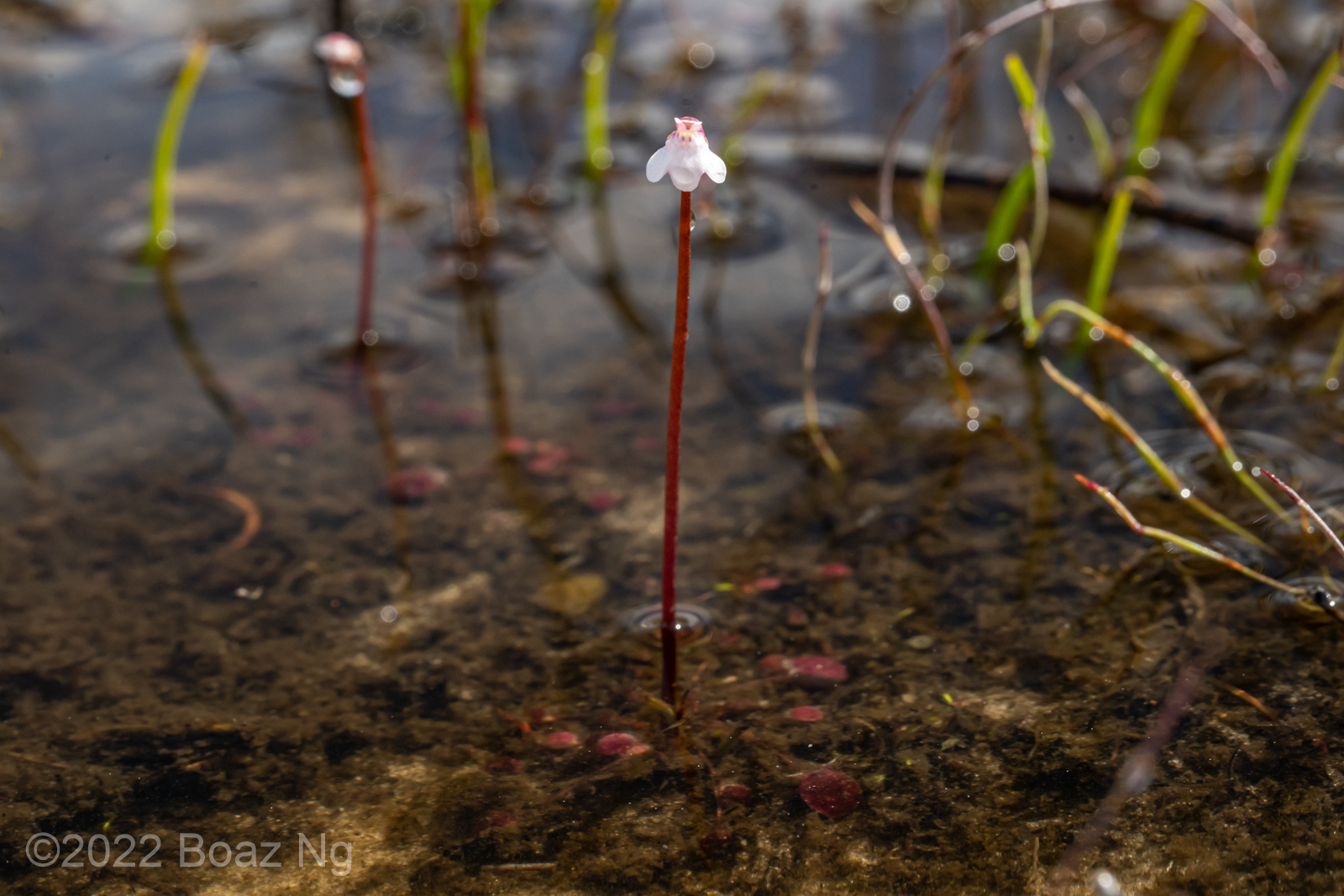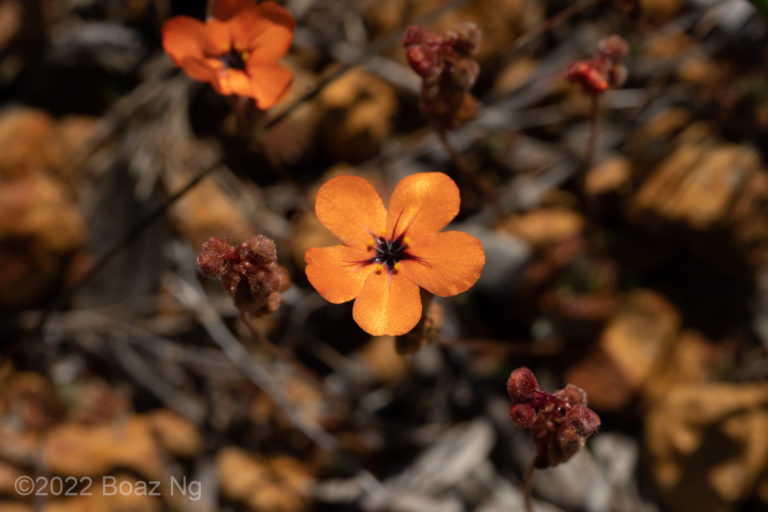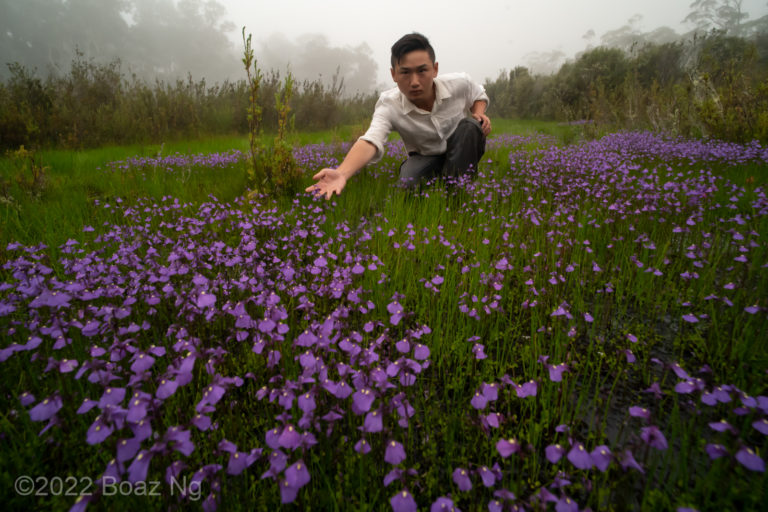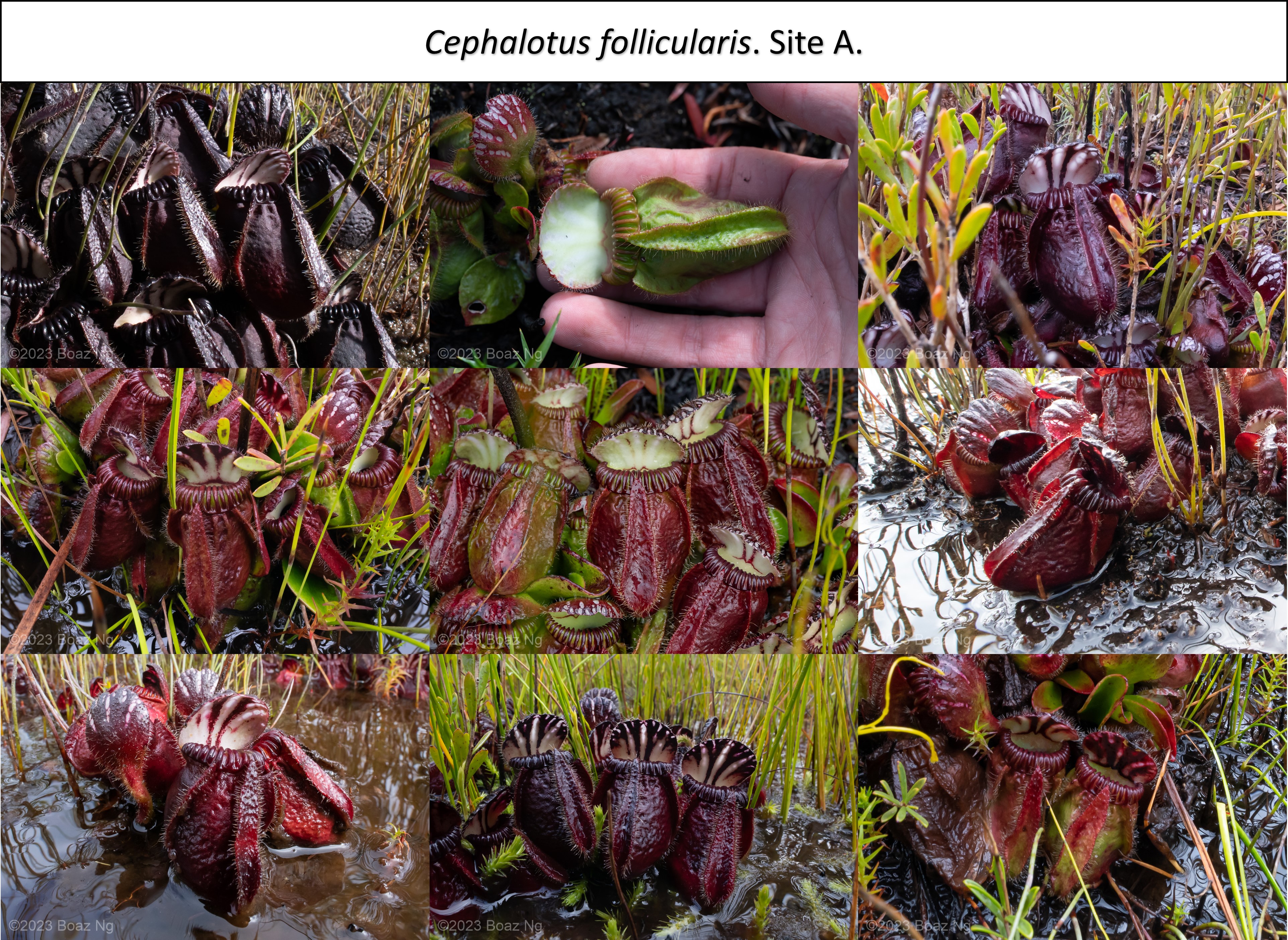Utricularia westonii is a bladderwort endemic to Cape Le Grand in Western Australia. The species is notable for its large traps which are formed in whorls around a central rosette and raised above the substrate.
Utricularia westonii has a small flower that is white to light pink in colouration. The lower corolla lip has three roughly equal-sized lobes with a round edge. The upper corolla lip is divided into two triangular lobes that are raised upwards. The palate has a set of angular ridges that are tinged yellow and magenta. The spur is broad, roughly the same length of the lower corolla lip and rounded at the extremity.
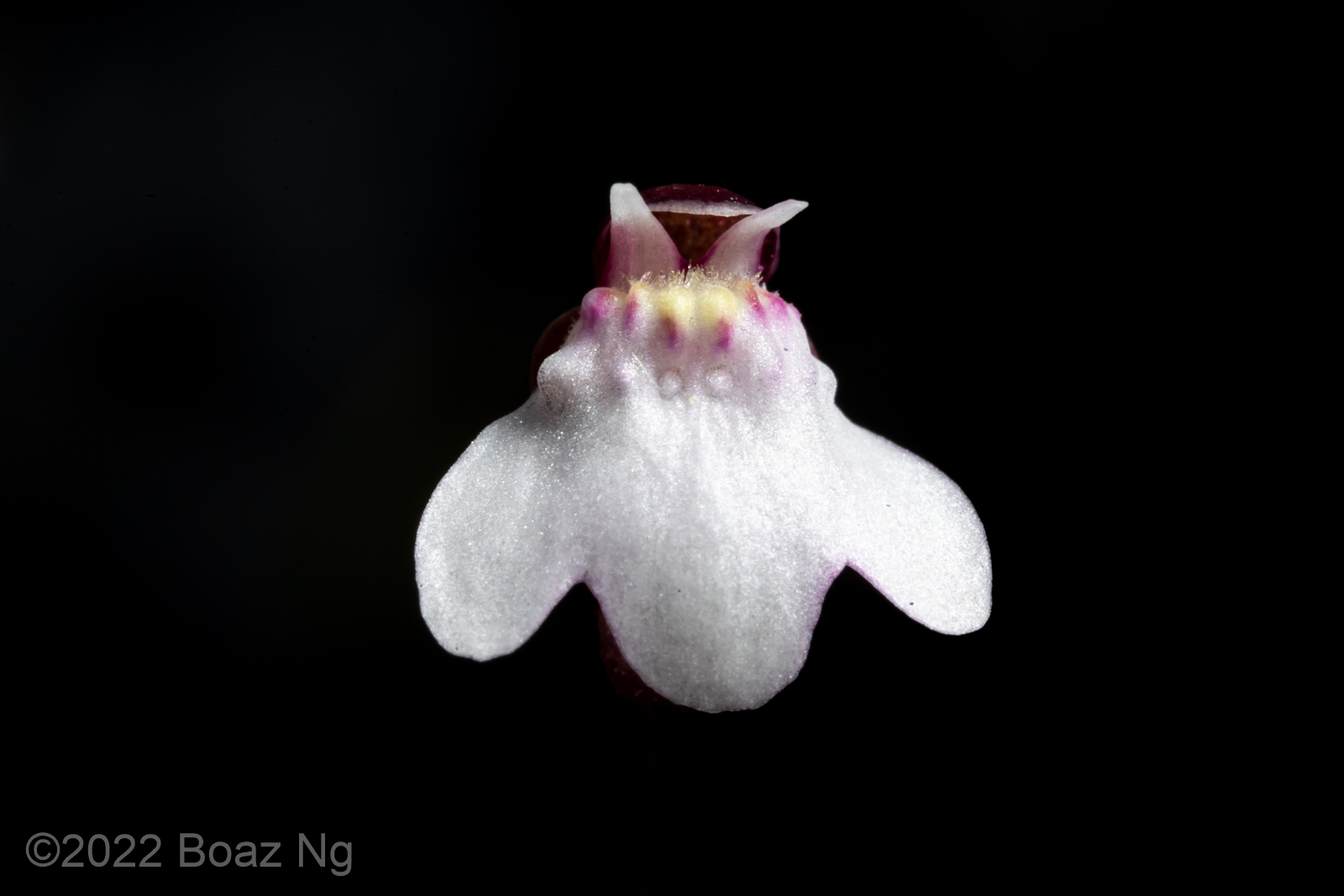
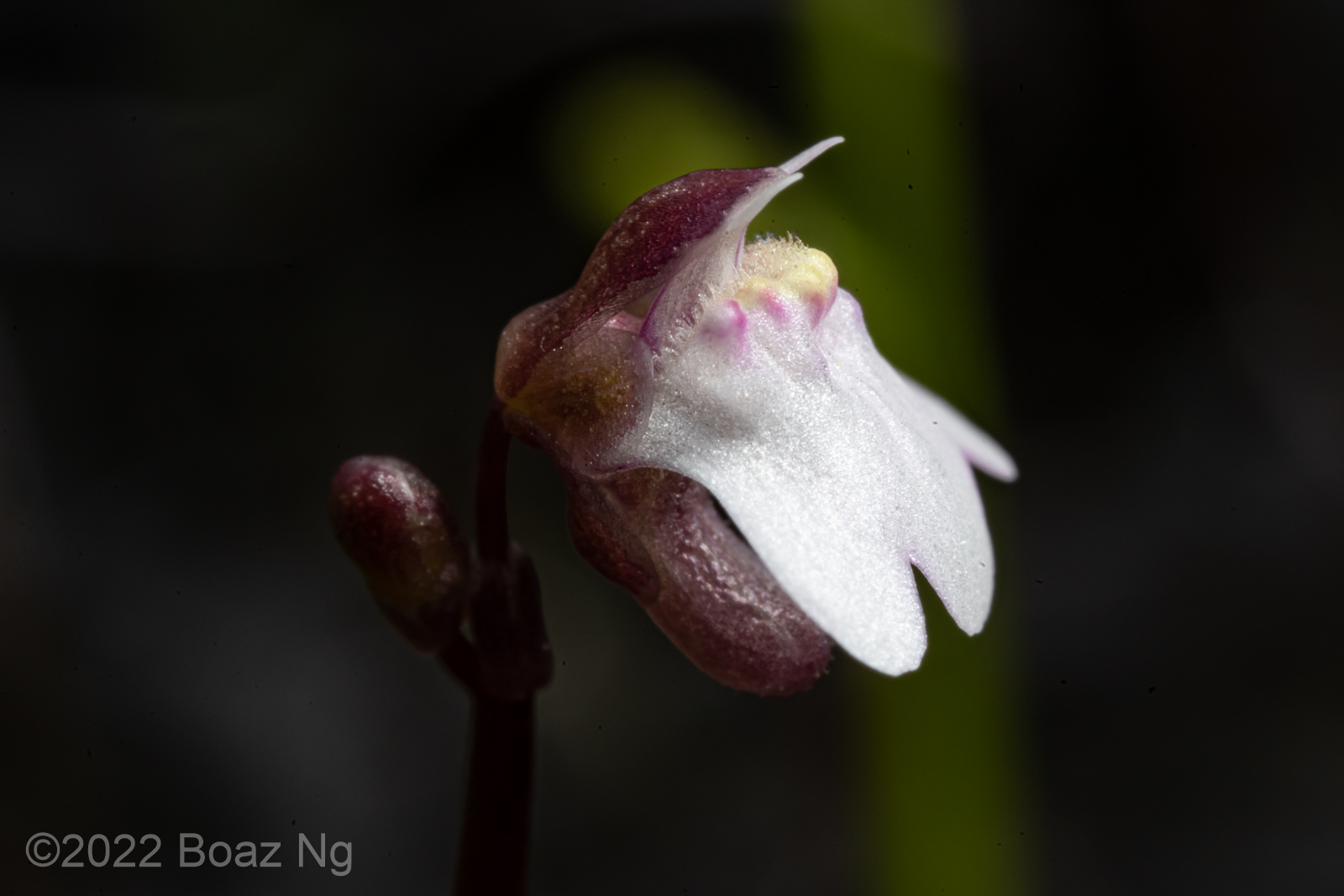
The species is notable for its large traps which reach approximately half a centimeter in length. The upper surface of the traps is flat and lies horizontally to the surface of the water, possibly allowing for photosynthesis. The trap is oval from above and triangular in cross-section. In exposed conditions, the upper surface of the traps are red while the undersides are white. These traps are produced on thin stems which radiate from a central rosette of leaves.
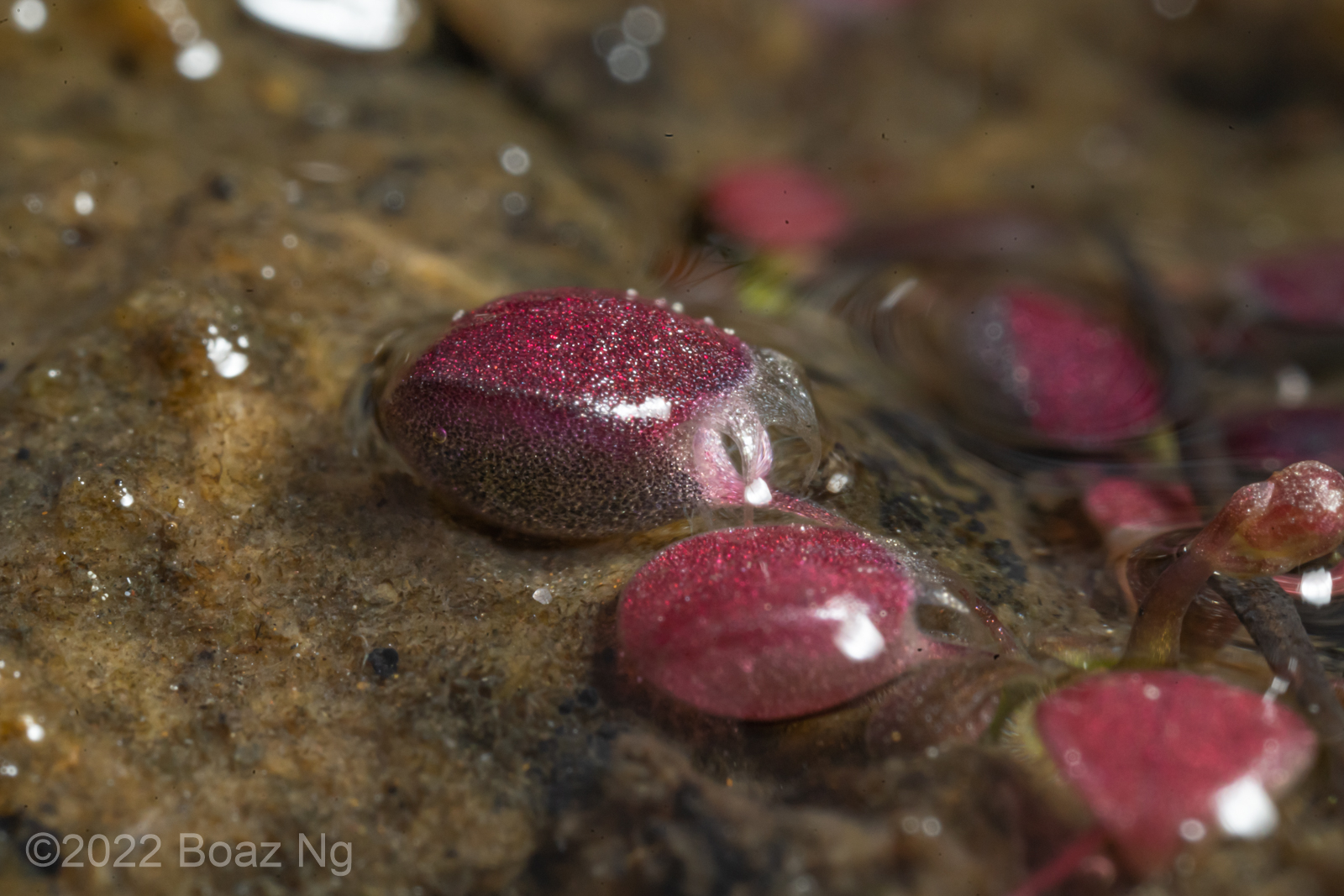
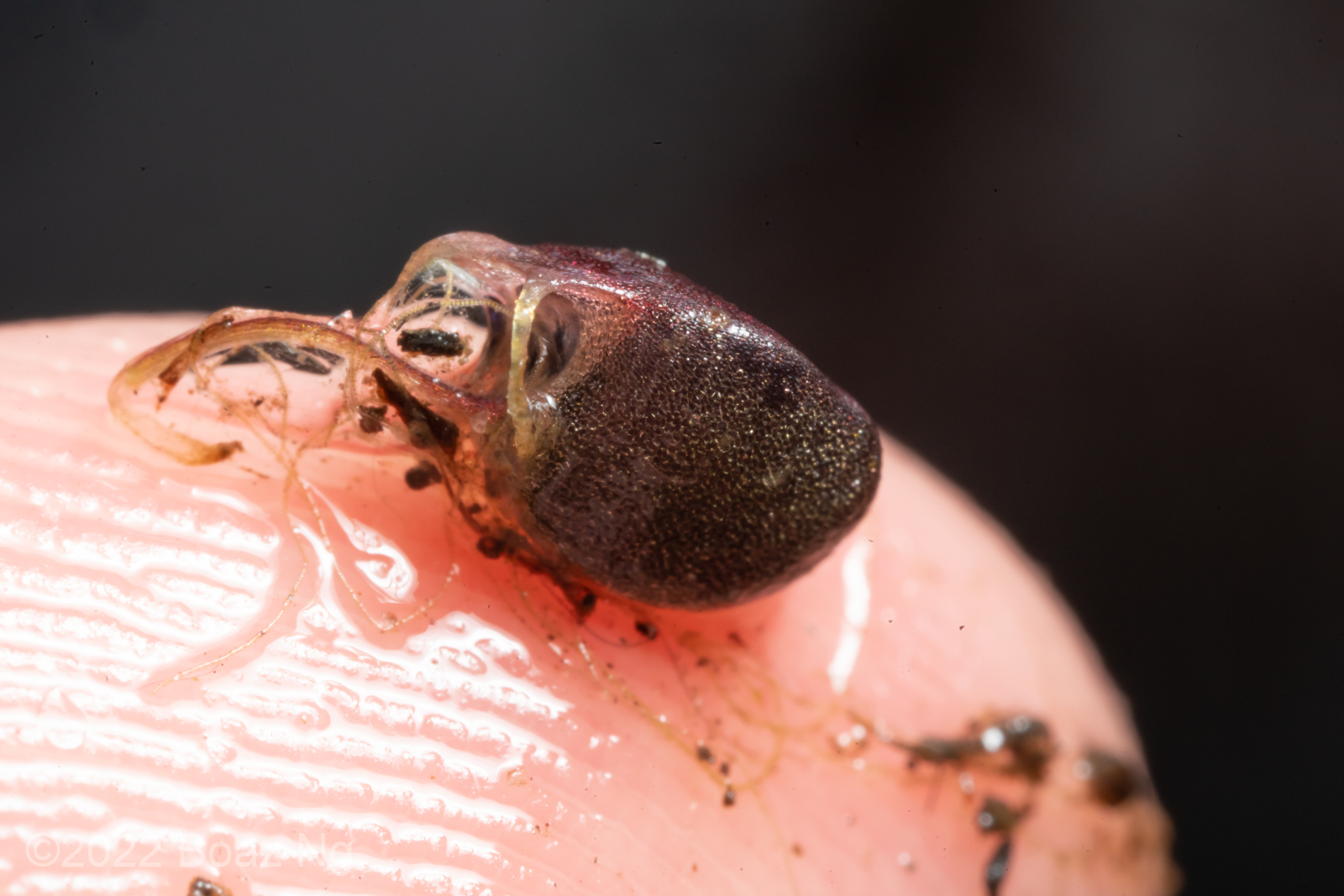
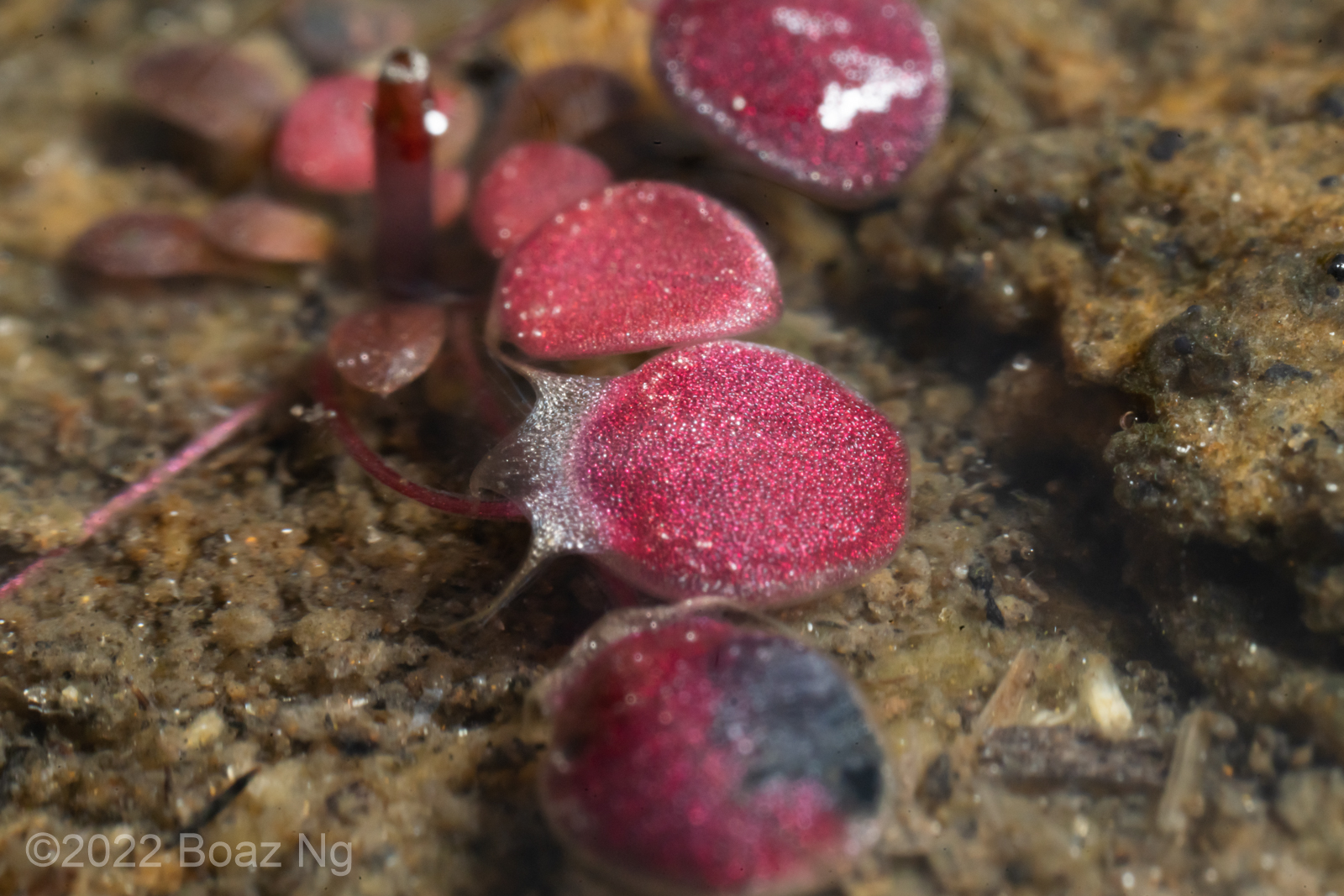
Utricularia westonii grows in shallow swamps and depressions in the Cape Le Grand national park east of Esperence in Western Australia. It typically occupies sandy substrate with a layer of dark brown organic matter under a few centimetres of water. The traps and leaves typically rest within this organic material with the upper surface exposed to sunlight. Towards summer the water level of the swamps recedes and the plants are exposed to air. Plants can persist emersed provided the substrate remains damp. Flowering occurs from September until their habitats dry out in mid summer.
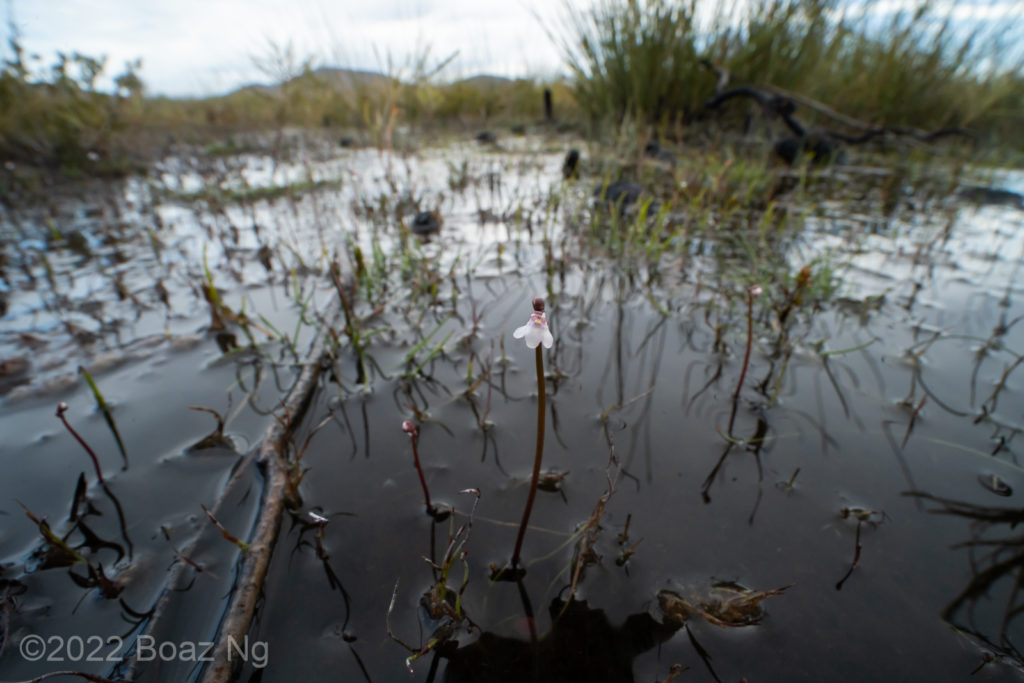
Utricularia westonii is in the subgenus Polypompholyx and is closely related to U. multifida and U. tenella. The large traps produced in a whorl above the substrate distinguish it from all other Australian bladderworts.

